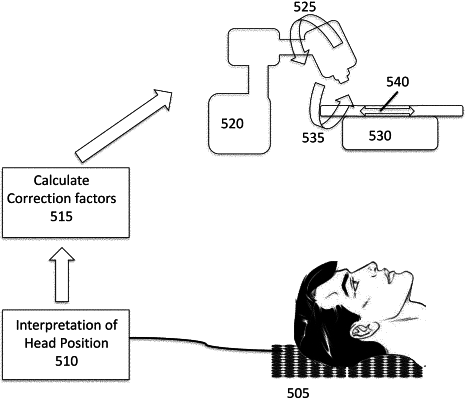| CPC A61N 5/1049 (2013.01) [A61B 6/04 (2013.01); A61N 5/107 (2013.01); A61N 5/1067 (2013.01); A61N 2005/1057 (2013.01); A61N 2005/1062 (2013.01)] | 24 Claims |

|
1. A method of tracking motion of a rigid portion of a patient's body for medical treatment, the method comprising:
determining a force or pressure distribution from one or more force sensors interfaced, directly or indirectly, with a portion of the patient's body having a targeted tissue;
determining a change from an initial position of the portion of the patient's body, in which the targeted tissue is aligned with a radiation treatment beam from a radiosurgery system, by detecting a change in the force or pressure distribution detected with the one or more force sensors;
determining an updated position of the portion of the patient's body having the targeted tissue; and
re-aligning the radiation treatment beam with the targeted tissue in the updated position,
wherein the one or more force sensors comprise at least one strain gauge extending between a treatment mask and a patient support, wherein each strain gauge of the at least one strain gauge is electrically supported by a Wheatstone quarter-bridge circuit such that an output voltage is indicative of a deformation of the respective strain gauge corresponding to the change from the initial position.
|